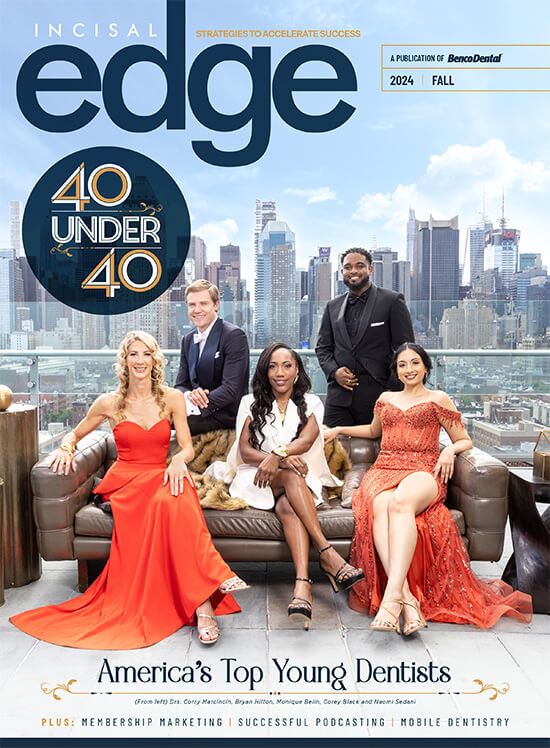In honor of this year’s 40 Under 40, take a moment to appreciate how far dentistry has come in the last few decades. And pat yourself on the back for persevering during the fastest era of change the profession has ever seen.
By Howard Gensler
WHEN DENTIST AND SILVERSMITH Paul Revere saw patients during the Revolutionary War era, there was no diploma on his wall (the first dental school wouldn’t exist for another 60 years). He couldn’t tell patients to lie back (the reclining chair had not yet been invented). There was also no anesthesia or electric light. Being a dentist 250 years ago was more like being a cobbler than a doctor.
Over the next 200 years, change was slow. There wasn’t all that much difference in dental offices from, say, the 1930s to the 1960s. In the last 50 years, however, we’ve seen not only a revolution in dentistry but also in the people who practice it. Whereas dentistry was once an old boys’ club, with sons taking over their fathers’ practices, a vastly more diverse array of people are now getting into the profession—and more dental schools are helping them get there.
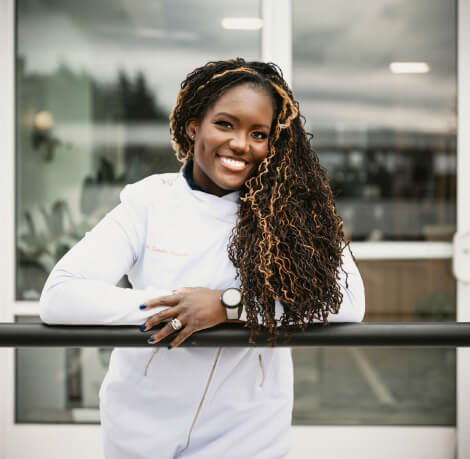
Dr. Zaneta Hamlin 2022 40 Under 40 Honoree
“Dental admissions definitely focused on building a more diverse class that mirrors the population,” says Dr. Scott De Rossi, founding dean of the High Point University Workman School of Dental Medicine in North Carolina. There is now less interest from the children of dentists to follow their parents’ lead and “more places where dentists can go to be employed than traditional mom-and-pop hang-a-shingle dental practices. There are lots more options.”
When the profession does stay in the family, the next generation is often a daughter.
Dr. Zaneta Hamlin, 38 and a member of the Incisal Edge 40 Under 40 in 2022, grew up watching her father practice dentistry in Detroit, Saskatchewan and Ghana. Now she runs Cusp Dental Boutique in Virginia Beach. “Just being with him,” she says, “and seeing him engage with patients, that’s why I developed my love of dentistry. I initially thought I’d be a lab tech, but the lab part was missing that person-to-person interaction.” Dr. Hamlin says she loves how she can change how people feel and thereby improve their confidence.
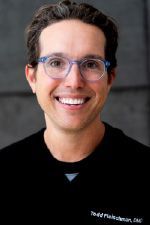
Dr. Todd Fleischman
Dr. Todd Fleischman, 46, a member of the 40 Under 40 in 2014, has dentistry in his blood. His father was a periodontist in northern Pennsylvania, and he has been practicing for the past 16 years in Center City Philadelphia. How has dentistry changed in the past 50 years? Dr. Fleischman laughs. “How about the last 20 years?” he says. “I hadn’t trained on anything digital when I finished dental school in 2004. Now almost everything we do is digital, so there has been an incredible learning curve for my generation of dentists who weren’t trained on it in school.” The days of patients lying under lead blankets and biting down on little cardboard films, thankfully, are gone.
“One of the biggest technological advances has allowed us to take some of the lab work into the office and do same-day dentistry,” says Dr. Jenny Hong, 35, of Timeless Smiles in Morgan Hill, California, who was in the 40 Under 40 Class of 2023. Her practice promotes same-day CAD/CAM dentistry that was strictly the province of extreme early adopters when she was born. These days, 3D printers are nearly as common in practices as a poster reminding patients to floss.
All this new technology, combined with a competitive need for more aesthetically minded offices that can resemble spas—to say nothing of the need for doctors to maintain a social media presence—has made modern dentistry both easier and more difficult. Better tools have rendered some tasks much less arduous. But there are so many more tasks.
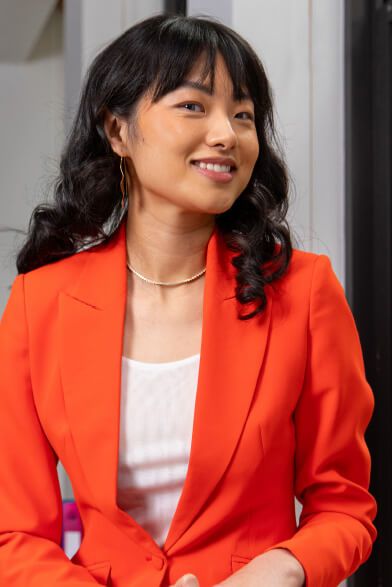
Dr. JENNY HONG 2023 40 Under 40 Honoree
Dr. Hong says she learns about many new techniques online. “You do need to be constantly aware of new things,” she says. “Instagram has helped. I follow other dentists’ accounts, and I dedicate a lot of my time to courses. The problem is that the instructor will talk about a topic and then you realize you need to learn something else.”
She adds that new technology also requires dentists to understand how to fix it if something goes wrong—or at least have someone technically minded standing by. Troubleshooting a 3D printer is not something one is typically taught in dental school.
Dr. De Rossi, the former High Point dental school dean, concurs. “Dental schools are not keeping pace with the changes we’re seeing in private practices—digital dentistry, AI, 3D printing. Dental schools are very slow to adapt. Students are paying between $200,000 and $500,000, and it’s not preparing them for the present state of health care.”
As a dentist in 2024, Dr. Hamlin says she has also been forced to become more knowledgeable about overall health and more collaborative with other medical professionals. “A lot of health issues patients have, such as vitamin deficiencies, show up in their mouths,” she says. “When we see that, we can tell the patient and get them in with their doctor so they can run some labs. These advancements take extra work, but I think they also make us better clinicians. On the other hand, the more I know the more I’m expected to know.”
Dental schools are not keeping pace with the changes we’re seeing in private practices—digital dentistry, AI, 3D printing. Dental schools are very slow to adapt. Students are paying between $200,000 and $500,000, and it’s not preparing them for the present state of health care.”
— Dr. Scott De Rossi
Founding dean, High Point University Workman School of Dental Medicine
“We talk about a more holistic approach when it comes to something as simple as gum disease,” Dr. Fleischman adds. “Evidence-based studies show gum disease is implicated in heart disease, stroke risk, diabetes. There are direct correlations. If we get people’s mouths healthy, their diabetes gets better.” But because of doctors’ increasingly futuristic tech and plush offices, Dr. Fleischman says, “I think patients’ expectations are higher now. They’re more educated and have greater access to information.”
“There’s definitely more consumerism,” Dr. De Rossi says. “Patients are being savvy regarding comfort, tech and safety. They want value. They’re looking at the entire experience from when they make the appointment to when they’re done.”
Social media, meanwhile, enables patients to compare their dentists and their dental experiences with others. Thirty years ago, dentists could practice on their own little island, Dr. Fleischman says. “Even when I first came out of school, before social media, the only people who saw the work you did were your patients, maybe their relatives and their friends. Now it can all be online in a matter of seconds, and it can really make or break things.” He adds that his strategy, and that of many fellow dentists, is “to offer old-school values in a new-school atmosphere. That seems to
be the right combination.”
Providing this new level of care costs more money than it did for our grandparents’ dentists, though. “There’s definitely a lot of investment in technology,” Dr. Hong says. “Not just in terms of digitizing the workflow, but also for patient comfort.” And if the practice is more targeted to cosmetic dentistry, those costs can be even higher.
At Dr. Hamlin’s practice, by necessity, “customer service” (so to speak) has changed; patients can watch Netflix or HBO while they’re getting their procedures done to distract themselves. “People have a lot of dental anxieties,” she says, “and we try to make it different from what it was before. Everyone thinks we’re just coming at them with needles. But that’s not where we are anymore. We’re trying to get people more comfortable because then they’ll do more preventative care and avoid those more painful, longer and more costly procedures.”
Has all this advanced education and fancy furniture made dentistry more lucrative? Not necessarily. Staffing is harder and more expensive than ever. The salary for a good dental hygienist is much higher than it was before the pandemic, when it became clear that hygienists were frontline workers risking their own health to serve others. Margins are lower. Contrast that with a generation or two ago, when dentistry was mostly a cash-driven business. “Then,” Dr. Fleischman says, “some dentists started taking insurance, and soon everyone had to start taking insurance.
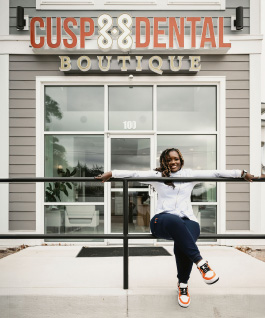
Dr. Fleischman’s assessment of the current state of play: “The business of dentistry has changed so much in my 20 years that I can’t imagine what it’s going to look like in 20 more years. That dentist is either going to have to be involved with a big group, ultra-boutique or really good at running a small business.”
While some longtime dentists fondly look back on the “good old days” and others express concern over the future, for many young dentists, these are the good old days. That’s why, after years of declining numbers, dental school admissions have generally been on a slow but steady rise since around 2012 despite challenges like higher tuition, inflation and even lingering Covid concerns. Why? As Dr. Hong told Incisal Edge last summer shortly after opening her practice, “Whether there’s a recession or there’s a pandemic, I believe that quality care will always withstand that.”
